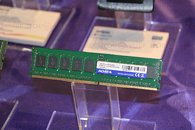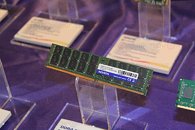Apr 1st, 2025 10:46 EDT
change timezone
Latest GPU Drivers
New Forum Posts
- What is the latest game you finished or 100% (15)
- X670 owners, what kind of PCH temps do you you see? (25)
- Hello (4)
- The TPU UK Clubhouse (26028)
- ViewSonic VG2757V-2K Display with Inbuilt Webcam and Multifunctional Docking Station Unboxing (4)
- best ram to buy for my usage and system specs? (0)
- RX 9070 availability (252)
- A Final Fantasy IX Reminiscence - My love letter and homage to one of the best stories ever told (75)
- Can you guess Which game it is? (50)
- RX 9000 series GPU Owners Club (92)
Popular Reviews
- DDR5 CUDIMM Explained & Benched - The New Memory Standard
- Sapphire Radeon RX 9070 XT Pulse Review
- ASRock Phantom Gaming B850 Riptide Wi-Fi Review - Amazing Price/Performance
- Palit GeForce RTX 5070 GamingPro OC Review
- SilverStone Lucid 04 Review
- Samsung 9100 Pro 2 TB Review - The Best Gen 5 SSD
- Enermax REVOLUTION D.F. 12 850 W Review
- Sapphire Radeon RX 9070 XT Nitro+ Review - Beating NVIDIA
- Assassin's Creed Shadows Performance Benchmark Review - 30 GPUs Compared
- AMD Ryzen 7 9800X3D Review - The Best Gaming Processor
Controversial News Posts
- MSI Doesn't Plan Radeon RX 9000 Series GPUs, Skips AMD RDNA 4 Generation Entirely (142)
- Microsoft Introduces Copilot for Gaming (124)
- AMD Radeon RX 9070 XT Reportedly Outperforms RTX 5080 Through Undervolting (119)
- NVIDIA Reportedly Prepares GeForce RTX 5060 and RTX 5060 Ti Unveil Tomorrow (115)
- Over 200,000 Sold Radeon RX 9070 and RX 9070 XT GPUs? AMD Says No Number was Given (100)
- NVIDIA GeForce RTX 5050, RTX 5060, and RTX 5060 Ti Specifications Leak (96)
- Retailers Anticipate Increased Radeon RX 9070 Series Prices, After Initial Shipments of "MSRP" Models (90)
- China Develops Domestic EUV Tool, ASML Monopoly in Trouble (88)
Thursday, January 9th 2014

ADATA Shows Off DDR4 Modules at CES
Taiwanese company ADATA Technology is gearing up for the arrival of DDR4 and at CES it showcased a couple of memory modules based on the standard. ADATA's DDR4 sticks have 8 GB and 16 GB capacities and run at 2133 MHz with CL15 latencies while powered at 1.2V.
The modules on display are 'suitable for servers' (they are R-DIMMs) but the company will surely have some consumer-oriented offerings for later this year when Intel launches the DDR4-supporting Haswell-E processors.
The modules on display are 'suitable for servers' (they are R-DIMMs) but the company will surely have some consumer-oriented offerings for later this year when Intel launches the DDR4-supporting Haswell-E processors.
Apr 1st, 2025 10:46 EDT
change timezone
Latest GPU Drivers
New Forum Posts
- What is the latest game you finished or 100% (15)
- X670 owners, what kind of PCH temps do you you see? (25)
- Hello (4)
- The TPU UK Clubhouse (26028)
- ViewSonic VG2757V-2K Display with Inbuilt Webcam and Multifunctional Docking Station Unboxing (4)
- best ram to buy for my usage and system specs? (0)
- RX 9070 availability (252)
- A Final Fantasy IX Reminiscence - My love letter and homage to one of the best stories ever told (75)
- Can you guess Which game it is? (50)
- RX 9000 series GPU Owners Club (92)
Popular Reviews
- DDR5 CUDIMM Explained & Benched - The New Memory Standard
- Sapphire Radeon RX 9070 XT Pulse Review
- ASRock Phantom Gaming B850 Riptide Wi-Fi Review - Amazing Price/Performance
- Palit GeForce RTX 5070 GamingPro OC Review
- SilverStone Lucid 04 Review
- Samsung 9100 Pro 2 TB Review - The Best Gen 5 SSD
- Enermax REVOLUTION D.F. 12 850 W Review
- Sapphire Radeon RX 9070 XT Nitro+ Review - Beating NVIDIA
- Assassin's Creed Shadows Performance Benchmark Review - 30 GPUs Compared
- AMD Ryzen 7 9800X3D Review - The Best Gaming Processor
Controversial News Posts
- MSI Doesn't Plan Radeon RX 9000 Series GPUs, Skips AMD RDNA 4 Generation Entirely (142)
- Microsoft Introduces Copilot for Gaming (124)
- AMD Radeon RX 9070 XT Reportedly Outperforms RTX 5080 Through Undervolting (119)
- NVIDIA Reportedly Prepares GeForce RTX 5060 and RTX 5060 Ti Unveil Tomorrow (115)
- Over 200,000 Sold Radeon RX 9070 and RX 9070 XT GPUs? AMD Says No Number was Given (100)
- NVIDIA GeForce RTX 5050, RTX 5060, and RTX 5060 Ti Specifications Leak (96)
- Retailers Anticipate Increased Radeon RX 9070 Series Prices, After Initial Shipments of "MSRP" Models (90)
- China Develops Domestic EUV Tool, ASML Monopoly in Trouble (88)


23 Comments on ADATA Shows Off DDR4 Modules at CES
Come back when you got something solid, ADATA.
The latency is 12% worse than a 1600mhz CL10 dimm that nobody seems to complain about, with throughput improved by 33%, all on 1.2v.
That is damn good for a first-gen DDR4 offering. Don't forget that DDR3 wasn't much better than DDR2 to start.
DDR4 is being hyped because PC sales are so bad that memory makers are not selling much DDR3. With DDR4 which is a totally different topology, you must buy all of the DDR4 RAM you desire in one purchase. There is no "adding of RAM" like with prior DDR memory. If you decide you want more DDR4 RAM then you scap what you have and pay again for a larger quantity of DDR4 RAM - and you get vertually nothing in system performance for the price. This is a desperation move because the PC industry like most industries is suffering from the 6+ year economic meltdown in Asia, the U.S. and Europe.
The same happened with DDR3 when they first launched, the DDR2-1066 or better were smoking them. Now a DDR3-2133 is exactly double the performance of the DDR2-1066. Same will happen with DDR4 when it will get improved freqs, 4Ghz or more. Just patience people.
And I remember it happened with DDR2 too that was slower than DDR(1) at launch...
In any event the power savings in servers will be what drives initial DDR4 adoption.